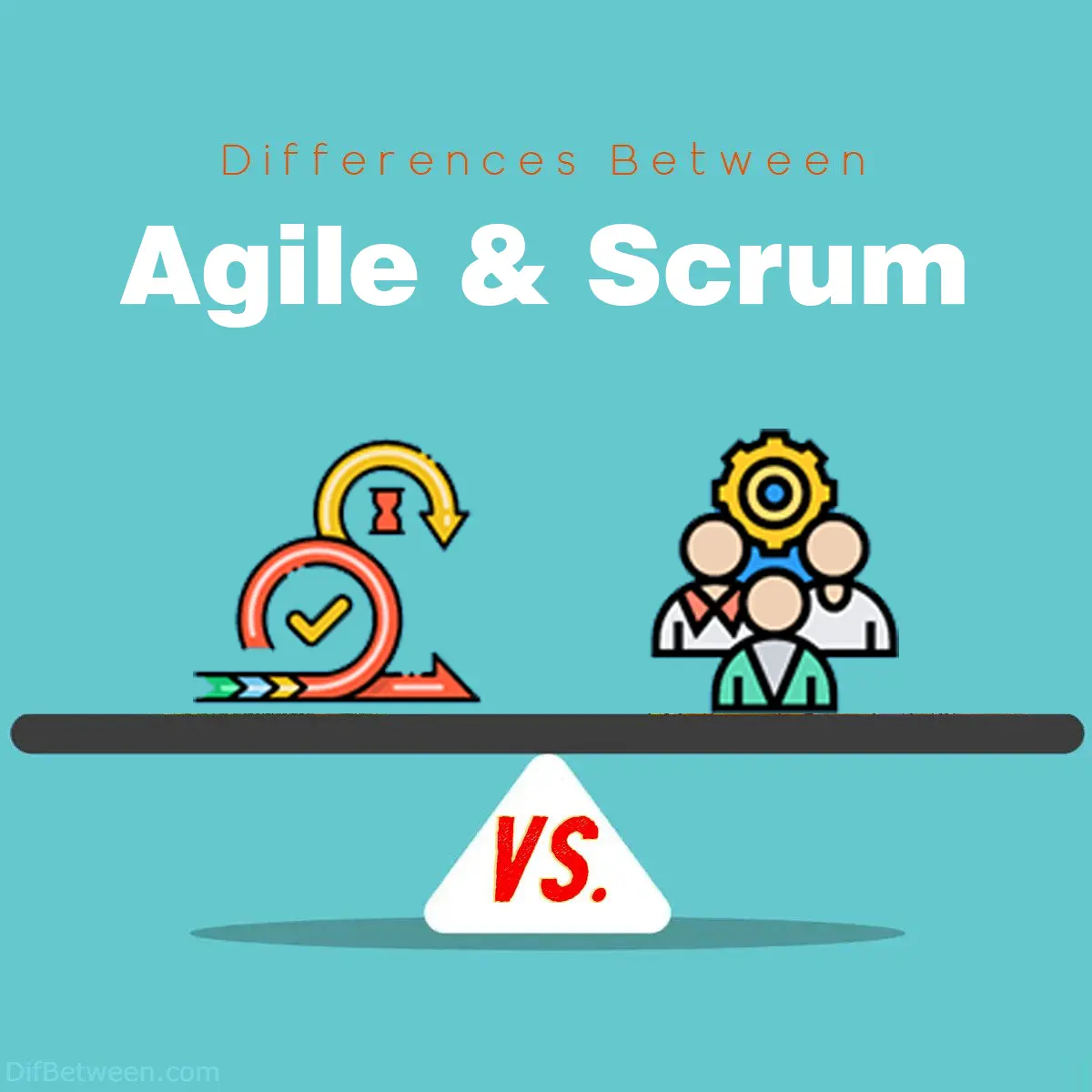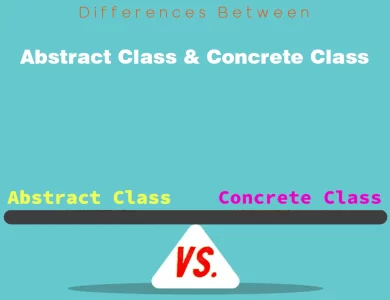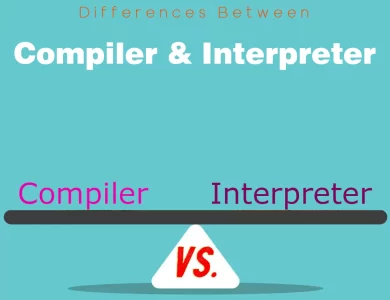
| Aspect | Agile | Scrum |
|---|---|---|
| Philosophy | Guiding philosophy emphasizing collaboration and evolution | Specific framework under the Agile philosophy |
| Framework vs. Methodology | Broad mindset adaptable to various methodologies | Prescriptive framework with defined roles and events |
| Roles | Flexible roles determined by the team | Defined roles: Product Owner, Scrum Master, Development Team |
| Project Flexibility | Highly flexible for changing requirements | Flexible between sprints; stable within sprints |
| Workflow | Varies based on selected methodology | Iterative workflow with fixed-length sprints |
| Artifacts | Varies based on selected methodology | Defined artifacts: Product Backlog, Sprint Backlog, Increment |
| Ceremonies/Events | Ceremonies vary by methodology chosen | Defined events: Sprint Planning, Daily Scrum, Sprint Review, Sprint Retrospective |
| Suitability | Broad suitability for diverse projects | Suitable for evolving projects with stable iterations |
In the dynamic landscape of project management, two methodologies stand out as champions of flexibility and adaptability: Agile and Scrum. While they share common ground in their approach to iterative development, they each possess unique attributes that set them apart. Let’s embark on a journey to unravel the key differences between Agile and Scrum, shedding light on their individual strengths and characteristics.
Differences Between Agile and Scrum
The main differences between Agile and Scrum lie in their nature and structure. Agile is a broad philosophy emphasizing flexibility, collaboration, and incremental development across various methodologies like Scrum, Kanban, and Lean. On the other hand, Scrum is a specific framework operating within the Agile philosophy, characterized by its structured approach with defined roles (Product Owner, Scrum Master, and Development Team), fixed-length iterations (sprints), and distinct ceremonies (Sprint Planning, Daily Scrum, Sprint Review, and Sprint Retrospective). While Agile grants the freedom to adapt practices, Scrum offers a prescriptive structure suitable for teams seeking clear roles, stable iterations, and systematic progress tracking.
Philosophy and Core Tenets
Agile: The Agile methodology is like a guiding philosophy, emphasizing collaboration, customer feedback, and constant evolution. It acknowledges that project requirements can evolve over time and prioritizes delivering valuable, functional increments quickly. The Agile Manifesto, a cornerstone of Agile, outlines four key values and twelve principles that underscore its approach. It values individuals and interactions, working solutions, customer collaboration, and responding to change.
Scrum: Scrum, on the other hand, is a specific framework that operates under the broader Agile philosophy. It is characterized by its structured approach, dividing projects into fixed-length iterations known as “sprints.” Scrum places a strong emphasis on roles, events, and artifacts, providing a defined structure to Agile practices. The three pillars of Scrum are transparency, inspection, and adaptation.
Framework vs. Methodology
Agile: Agile isn’t a strict methodology; it’s a mindset that informs various methodologies. Scrum, Kanban, Lean, and Extreme Programming (XP) are some of the methodologies that align with Agile principles. Agile encourages teams to cherry-pick the practices that suit their context best, promoting a tailored approach to project management.
Scrum: Scrum, on the other hand, is a specific methodology under the Agile umbrella. It offers a comprehensive framework with clearly defined roles, ceremonies, and artifacts. This framework is highly prescriptive, which can be advantageous for teams new to Agile practices, providing a ready-made structure to follow.
Roles and Responsibilities
Agile: The Agile approach is less prescriptive when it comes to roles. While it emphasizes collaboration, it doesn’t mandate specific roles. Team members collectively decide how to organize themselves to best achieve project goals. This flexibility can be liberating, allowing teams to adapt to the project’s unique demands.
Scrum: In Scrum, roles are well-defined. The core roles include the Product Owner, Scrum Master, and Development Team. The Product Owner is responsible for maintaining the product backlog and ensuring that the team works on the most valuable features. The Scrum Master facilitates the Scrum process and supports the team. The Development Team carries out the work and determines how much they can commit to in a sprint.
Project Flexibility
Agile: Agile projects are inherently flexible. They accommodate changes in requirements even in later stages of development. This flexibility is ideal for industries or projects where change is a constant, allowing teams to pivot quickly and incorporate new insights.
Scrum: While Scrum promotes flexibility within the confines of a sprint, changes to the sprint scope are generally discouraged once a sprint has begun. This stability during sprints ensures that teams can focus on the committed work without disruptions. However, Scrum projects can adapt between sprints, adjusting the product backlog based on evolving priorities.
Workflow and Iterations
Agile: Agile workflows vary depending on the chosen methodology. Kanban, for instance, visualizes work on a continuous flow basis. Extreme Programming (XP) focuses on engineering practices. Agile iterations can be shorter or longer, depending on the methodology and project needs.
Scrum: Scrum follows a well-defined iteration structure with its sprints, typically lasting 2 to 4 weeks. The team plans, develops, tests, and delivers a potentially shippable product increment within each sprint. This regular cadence provides a rhythm to the project and enables frequent feedback.
Artifacts
Agile: Agile projects produce artifacts based on the selected methodology’s practices. These could include user stories, burndown charts, cumulative flow diagrams, and more. The choice of artifacts depends on the methodologies adopted within the Agile framework.
Scrum: Scrum introduces specific artifacts. The Product Backlog is an ordered list of features or requirements, while the Sprint Backlog contains the tasks the Development Team commits to in a sprint. The Increment is the sum of all completed backlog items at the end of the sprint. These artifacts contribute to the transparency and progress tracking in Scrum.
Ceremonies or Events
Agile: Agile methodologies have their own ceremonies, such as daily stand-ups in Kanban or planning games in XP. These ceremonies foster collaboration, visibility, and continuous improvement, catering to the specific needs of the chosen Agile methodology.
Scrum: Scrum defines a set of ceremonies: Sprint Planning, Daily Scrum, Sprint Review, and Sprint Retrospective. These events provide a structured cadence for communication, ensuring alignment, transparency, and continuous refinement throughout the project.
Suitability and Adoption
Agile: Agile’s adaptability makes it suitable for a wide range of projects across various industries. Teams that value flexibility, customer collaboration, and rapid iterations often find success with Agile approaches.
Scrum: Scrum is particularly suitable for projects where the requirements are likely to evolve and change, yet the stability of a sprint is valued. It’s a good fit for cross-functional teams looking for a clear framework to guide their Agile journey.
Agile or Scrum : Which One is Right Choose for You?
In the ever-evolving landscape of project management, the question of whether to embrace Agile or Scrum can be a pivotal decision. Both methodologies offer unique advantages, but understanding your team’s needs and project characteristics is essential to making an informed choice. Let’s embark on a journey to explore the factors that can help you determine whether Agile or Scrum is the right choice for you.
When to Choose Agile
- Flexibility is Paramount: If your project landscape is characterized by rapidly changing requirements and a need for continuous adaptation, Agile might be your go-to choice. Agile’s inherent flexibility empowers teams to pivot and adjust without derailing the entire project.
- Collaboration is Key: Agile places a strong emphasis on collaboration among team members, stakeholders, and customers. If fostering open communication, feedback loops, and a sense of shared ownership aligns with your project’s goals, Agile can provide the framework for such an environment.
- Embracing Evolution: Does your project’s success depend on gradual enhancements and iterations? Agile thrives on delivering value in increments, allowing you to make iterative improvements based on ongoing feedback and changing priorities.
- Variety of Methodologies: Agile is a versatile umbrella term that encompasses various methodologies such as Kanban, Lean, and Extreme Programming (XP). If you value the freedom to tailor your approach based on your team’s strengths and project needs, Agile provides the canvas to do so.
When to Choose Scrum
- Clear Structure Desired: If your team benefits from a well-defined framework with clear roles, events, and artifacts, Scrum might be your ideal match. Scrum’s structured approach offers a roadmap that can be particularly helpful for teams new to Agile practices.
- Stable Iterative Cadence: If your project requires a stable sprint cycle with predictable durations, Scrum’s fixed-length sprints can provide the rhythm you need. This stability can enhance planning and create a consistent pace of delivery.
- Emphasis on Roles and Accountability: Scrum’s explicit roles—Product Owner, Scrum Master, and Development Team—provide a clear distribution of responsibilities. If a delineated structure enhances your team’s efficiency and accountability, Scrum might be the way to go.
- Cross-Functional Collaboration: Scrum encourages cross-functional collaboration within the Development Team. If your project’s success hinges on bringing diverse skills and expertise together, Scrum can foster synergistic collaboration.
Making the Choice
Ultimately, the choice between Agile and Scrum depends on a variety of factors:
- Project Nature: Consider the stability of requirements, the need for iterative development, and the potential for change throughout the project’s lifecycle.
- Team Dynamics: Evaluate your team’s existing strengths and communication patterns. Some teams may thrive in a more self-organized, flexible Agile environment, while others might benefit from the structure of Scrum.
- Customer Engagement: If your project requires close customer collaboration and frequent feedback, Agile’s customer-centric approach might be advantageous.
- Learning Curve: Assess your team’s familiarity with Agile practices. Scrum’s structured approach can provide a smoother transition for teams new to Agile methodologies.
In the end, remember that Agile and Scrum are not mutually exclusive choices. Some teams even blend aspects of both methodologies to create a customized approach that suits their unique context.
| Consideration | Agile | Scrum |
|---|---|---|
| Flexibility | Highly adaptable to changing requirements | Offers flexibility between sprints |
| Framework Structure | Broad and adaptable, less structured | Well-defined roles, events, and artifacts |
| Team Collaboration | Emphasizes collaboration and communication | Encourages cross-functional collaboration |
| Project Iterations | Iterative development with varying cycles | Stable sprint cycle with fixed-length iterations |
| Accountability | Relies on team-driven organization and responsibility | Clearly defined roles and responsibilities |
| Customer Engagement | Focuses on customer collaboration and feedback | Incorporates customer feedback through ceremonies |
| Learning Curve | Offers a range of methodologies; flexible learning curve | Defined framework with structured roles and events |
| Customization | Can be tailored to team and project preferences | Offers a structured framework for consistent practices |
In the end, your choice hinges on your project’s unique demands and your team’s collaborative dynamics. Both Agile and Scrum hold the potential to revolutionize your project management approach, fostering innovation, collaboration, and continuous improvement along the way.
FAQs
Agile is a project management philosophy that prioritizes collaboration, customer feedback, and iterative development. It allows teams to adapt to changing requirements and deliver incremental value.
Scrum is a specific framework operating under the Agile philosophy. It involves defined roles (Product Owner, Scrum Master, and Development Team), fixed-length iterations (sprints), and structured ceremonies (Sprint Planning, Daily Scrum, Sprint Review, and Sprint Retrospective).
No, they are not the same. Agile is a broader philosophy guiding various methodologies, while Scrum is a specific methodology within the Agile framework, offering a structured approach with predefined roles and events.
The main differences lie in their nature and structure. Agile is a philosophy, while Scrum is a framework. Agile offers flexibility and collaboration across methodologies, while Scrum provides a structured approach with fixed roles, iterations, and ceremonies.
Scrum is designed to operate within the Agile philosophy. While it’s possible to use some Scrum practices independently, the full benefits of Scrum are best realized within the Agile framework.
There’s no one-size-fits-all answer. It depends on your project’s needs. Agile is adaptable and flexible, while Scrum provides a clear structure. Choose based on your team’s dynamics and project requirements.
Yes, Agile and Scrum can be combined. Many teams use Agile principles within Scrum practices or blend aspects of different methodologies to create a customized approach that suits their needs.
Agile, including Scrum, is suitable for projects with evolving requirements, customer collaboration, and a need for incremental improvements. Scrum is particularly suitable when stable iterations and clear roles are essential.
No, Scrum is just one of the methodologies that fall under the Agile umbrella. Other methodologies include Kanban, Lean, and Extreme Programming (XP).
Consider your project’s nature, team dynamics, need for structure, and customer engagement. If flexibility is vital, Agile might be better. If you value a structured approach, Scrum could be the right fit.
Read More :






